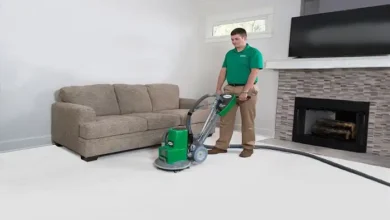How to Build Connections in the Interior Design Industry?

Networking can be the key to opening a world of prospects, regardless of whether you’re an interior designer by trade or are presently enrolled in an Interior Design Course. In this blog, we’ll discuss the value of networking in the interior design field and offer advice on How to Become an Interior Designer and how to develop deep ties with peers and experts.
Table of Content
- Why Networking Matters in Interior Design
- Where to Start Building Connections
- Effective Networking Strategies
- Building and Nurturing Relationships
- Conclusion
Why Networking Matters in Interior Design
Here are some compelling reasons to prioritise networking:
- Building Your Reputation: You can effectively network and demonstrate your abilities, professionalism, and sense of style.
- Access to Opportunities: Your connections can provide you access to unique job openings, design competitions, and industry events, all of which can help advance your interior design career.
- Staying Informed and Inspired: You can keep up with the most recent advancements in the field via networking.
- Collaboration and Growth: Collaboration with professionals from other professions, such as architects, contractors, and suppliers, is critical for project success.
Where to Start Building Connections
Let’s look at some important areas where you can start forming important relationships:
Industry Events and Trade Shows
Networking opportunities flourish at industry events and trade exhibits. Designers, vendors, and industry professionals from all around the world attend these events. Attendees can learn about the newest trends, products, and technology while networking with other professionals.
Joining Professional Associations
Getting involved in professional interior design at the company might revolutionise your attempts to network. Organisations that offer forums for networking, instructional materials, and industry insights are the American Society of Interior Designers (ASID) and the International Interior Design Association (IIDA). Joining these associations gives your profile legitimacy and gives you access to a network of seasoned experts.
Online Platforms and social media
Platforms such as LinkedIn, Instagram, and Houzz enable you to display your portfolio, interact with your colleagues, and connect with new clients. Be active on these networks, sharing your work and conversing with other interior designers. It’s a fantastic tool to broaden your reach and interact with experts across borders.
Local Networking Groups
Never neglect the influence that local networking can have. Find regional workshops, meetups, and networking opportunities related to interior design. These get-togethers offer a more personal environment for establishing relationships with industry experts. Developing local links can open doors to nearby project opportunities and collaborations.
Effective Networking Strategies
Developing genuine relationships is the core of networking, beyond exchanging business cards. Here’s how to do it right:
- Creating an Elevator Pitch: Networking is more than just exchanging business cards; it is about developing genuine relationships. Here’s how to do it correctly:
- Leveraging Your Interior Design Course Network: Work together on projects, exchange experiences, and encourage one another’s development. Develop relationships with your other classmates early on because they may end up working with you in the future.
- Attending Workshops and Seminars: These gatherings frequently draw industry experts and fellow designers. Actively participate in discussions, ask questions, and interact with presenters and attendees. Don’t forget to exchange contact information with anybody you meet at these events.
- Seeking Mentorship: A mentor can share experiences, offer advice, and connect you with people in their network. Developing a mentorship connection is one of the best things you can do to advance your career in interior design.
Building and Nurturing Relationships
Here are some vital strategies for establishing and maintaining long-term relationships in the interior design industry:
- The Power of Follow-ups: Keep in touch with people you met at industry events or after attending new ones. Send them a personalised email or message afterwards to let them know how much you enjoyed meeting them.
- Offering Value to Others: Share any articles, resources, or opportunities you come across that may interest a connection. This readiness to assist others cultivates goodwill and deepens your relationships.
- Building a Strong Online Presence: Maintaining and growing your network can be simplified by your online presence, which includes your website, social media profiles, and portfolio. Update your web platforms frequently with your most recent creations, industry trends, and design observations.
- Collaborating on Projects: Collaboration is an excellent approach to strengthen bonds and grow together. Collaboration on projects with other designers, contractors, or suppliers can be mutually beneficial.
Conclusion
Developing genuine connections with like-minded individuals passionate about design is the essence of networking, which extends beyond the simple exchange of business cards. These relationships may open doors to exciting new ventures, imaginative teamwork, and long-lasting friendships. As you put these tactics into practice, remember that connections are as important to maintain as they are to establish, that chances abound, and that your reputation is an asset.




